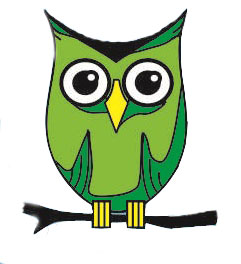In vitro antifungal activity of lime peels extract (Citrus aurantifolia (Cristm.) Swingle.) against Fusarium oxysporum Schlecht. em. Snyd. & Hans.
Abstract
Keywords
Full Text:
PDFReferences
Adegoke, A.A. dan Adebayo-tayo, B.C. 2009. Antibacterial Activity and Phytochemical Analysis of Leaf Extracts of Lasienthera africanum. African Journal of Biotechnology, 3(3): 156.
Aniszewki, T. 2007. Alkaloid-secrets of Life. Amsterdam : Elsevier.
Cai, R., Hu, M., Zhang, Y., Niu, C., Yue, T., Yuan, Y., and Wang, Z. 2019. Antifungal activity and mechanism of citral, limonene, and eugenol against Zygosaccharomyces rouxii. LWT Food Science and Technology, 109: 50-56.
Fouillaud, M., Venkatachalam, M., Valenciennes, E., Caro, Y., dan Dufosse, L. 2016. Anthraquinones and Derivatives from Marine-Derived Fungi: Structural Diversity and Selected Biological Activities. Marine Drugs, 14(4): 64.
Kadja, D.H. 2013. ‘Biological Control of Fusarium sp. using Rhizobacteria’. Tesis. Faculty of Agriculture, Nusa Cendana University, Kupang.
Khotimah, K., Rahmawati, and Mukarlina. 2017. Antifungal activity of ethanolic extract of Citrus nobilis var. microcarpa peels from its stem base, against Phytophthora sp. Im5. Protobiont ,6 (3) : 188 – 193.
Kidd, S., Halliday, C., Alexiou, H., dan Ellis, D. 2016. Description of Medical Fungi. Australia: National Mycology Reference Centre Microbiology & Infectious Diseases.
Novriyanti, E, Santosa, E, Syafii, W, Turjaman, M, & Sitepu, IR. 2010. ‘Antifungal Activity of Wood Extract of Aquilaria crassna Pierre ex Lecomte Against Agarwood-Inducing Fungi, Fusarium solani’. Journal od Foresty Research, 7(2): 155-165.
Okwu, D, E., Awurum, A.N., dan Okorunkwo, J.I. 2007. Phytochemical Composition and In Vitro Antifungal Activity Screening of Extracts from Citrus Plants against Fusarium oxysporum of Okra Plant (Hibiscus esculentus). Pest Technology, 1(2): 145-148.
Semangun, H. 2001. Horticultural plant diseases in Indonesia. Yogyakarta: Gadjah Mada University Press.
Suryana, I. 2004. The activity of leaf extract of Piper betle Linn. against Rhizoctonia sp. Skripsi. Bogor: Faculty of Forestry, Bogor Agriculture Institute.
Wahyunigtyas, E. 2008. The effect of Graptophyllum pictum extracts against Candida albicans on acrylic resin denture plates. Indonesian Journal of Dentistry, 15(3): 187-191.
Watson, R.R dan Preedy, V.R. 2007. Bioactive foods in promoting health: probiotics and prebiotics. USA: Academic Press.
DOI: https://doi.org/10.26555/symbion.3510
Refbacks
- There are currently no refbacks.
Copyright (c) 2020 Symbion

Symbion organized by
Deparment of Biology Education
Faculty of Teacher Training and Education
Universitas Ahmad Dahlan, Yogyakarta
Campus 4 UAD Jl. Ringroad Selatan, Kragilan, Tamanan, Banguntapan, Bantul,
Special Region of Yogyakarta, 55191